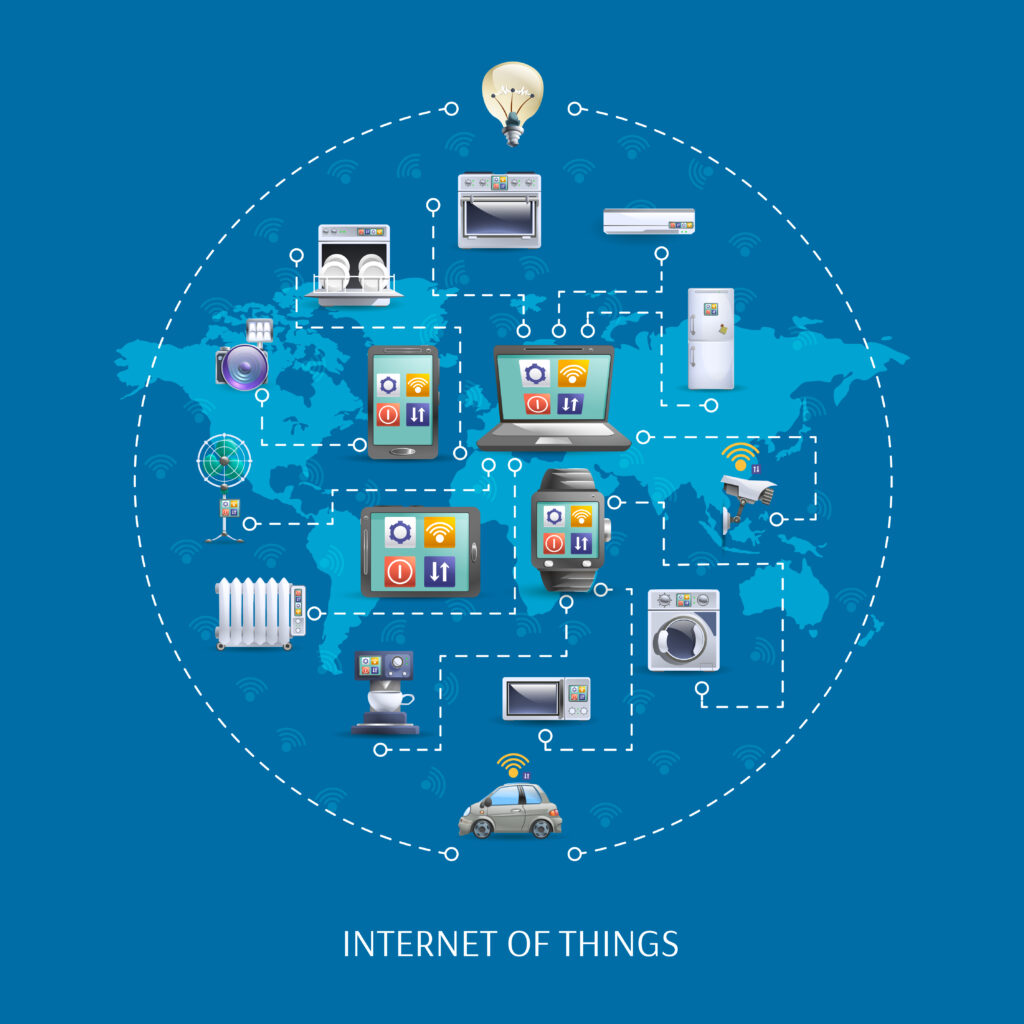1- Introduction: (Power of Internet of Things)
The Power of Internet of Things (IoT) has emerged as a revolutionary concept, connecting devices, systems, and people through the internet. This interconnected network has the potential to transform industries and daily lives, enabling seamless communication and automation.

Table of Contents
2- Top Trends in IoT: (Power of Internet of Things)
a- Edge Computing:
IoT devices are processing data closer to the source, reducing latency and enhancing efficiency.
b- 5G Integration:
The rollout of 5G networks is set to provide the speed and bandwidth needed for robust IoT connectivity.
c- AI and Machine Learning:
These technologies empower IoT devices to learn and make intelligent decisions, amplifying their capabilities.
3- Recent Developments in IoT(Power of Internet of Things) Security:
With the proliferation of IoT devices, security concerns have escalated. Recent advancements include:
a- Blockchain for Security:
Utilizing blockchain to enhance the integrity and transparency of IoT transactions.
b- IoT Cybersecurity Standards:
Developing industry-wide standards to mitigate vulnerabilities in IoT devices.
4- Real-world Applications of IoT(Power of Internet of Things):
IoT’s reach spans across various sectors:
a- Healthcare:
Remote patient monitoring and smart medical devices for efficient healthcare delivery.
b- Smart Cities:
IoT-driven solutions for managing resources, reducing traffic, and enhancing urban living.
5-How to Implement IoT Solutions Effectively: (Power of Internet of Things)
a- Clear Objectives:
Define the purpose and goals of integrating IoT within your business operations.
b- Scalability:
Ensure that your IoT infrastructure can accommodate future growth and changes.
c- Data Security:
Implement robust encryption and access controls to protect sensitive information.
6- The Future of IoT: What to Expect: (Power of Internet of Things)
The future of IoT holds exciting possibilities:
a- Hyper-connectivity:
A world where nearly all devices are interconnected, revolutionizing how we interact with technology.
b- Autonomous Systems:
Continued development of self-driving cars and advanced robotics, powered by IoT.
More about:
Internet of Things
Our recent post: The Internet of Things (IoT): Transforming Our Connected World

7- Conclusion: (Power of Internet of Things)
By staying informed about the latest IoT news, trends, and implementation strategies, you can position yourself and your business at the forefront of the digital transformation that IoT is driving. Embrace the power of connectivity and unlock new avenues for innovation and growth.
FAQs:
Q: What is the Internet of Things (IoT)?
A: The Internet of Things (IoT) refers to a network of interconnected physical objects, devices, and systems that can communicate and exchange data over the internet without human intervention.
Q: How does IoT benefit businesses?
A: IoT offers businesses enhanced efficiency, data-driven insights, and automation. It enables real-time monitoring, predictive maintenance, and improved customer experiences.
Q: What are some common security challenges in IoT?
A: Security challenges in IoT include data breaches, unauthorized access to devices, and lack of standardized security protocols. Ensuring device authentication and encryption is crucial.
Q: Can you provide examples of IoT applications in daily life?
A: Certainly. Smart thermostats, wearable fitness trackers, and voice-controlled assistants like Amazon Echo are examples of IoT devices that enhance convenience and connectivity in daily life.
Q: How does IoT contribute to smart cities?
A: IoT enables smart city solutions such as intelligent traffic management, waste management, and energy optimization. These technologies enhance urban living by making cities more efficient and sustainable.
Q: What is edge computing in the context of IoT?
A: Edge computing involves processing data closer to the data source or device, rather than sending it to a centralized cloud server. This reduces latency and improves response time, making it ideal for IoT applications that require real-time processing.

